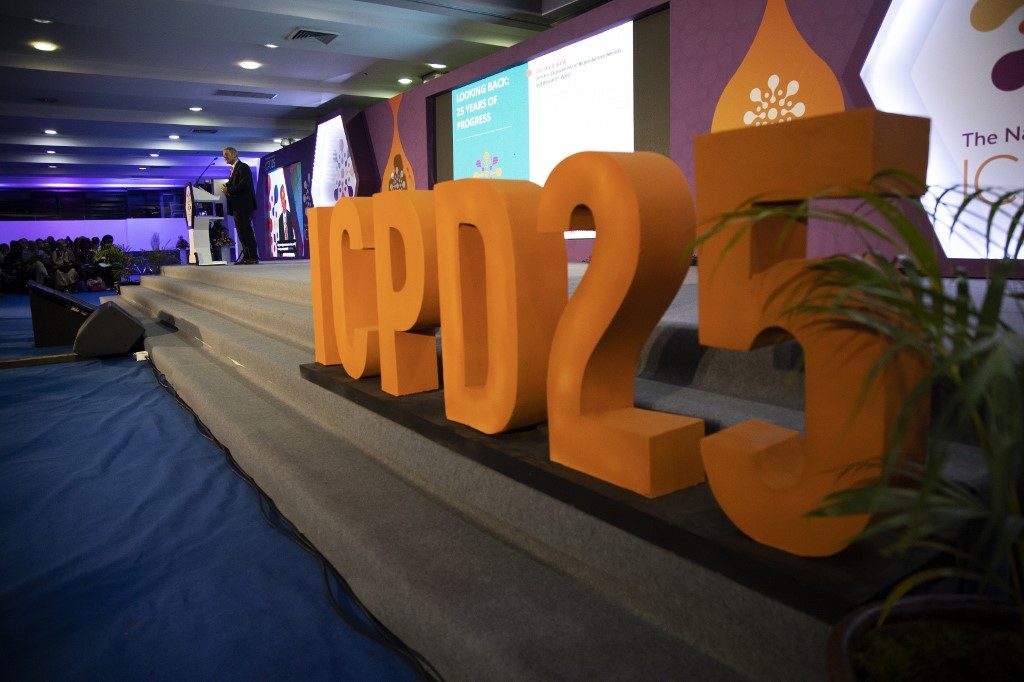SUMMARY
This is AI generated summarization, which may have errors. For context, always refer to the full article.

NAIROBI, Kenya – The fight for safe abortions is an uphill struggle with half of all terminations worldwide still conducted in risky conditions, pro-choice advocates told a major women’s health conference in Nairobi.
Despite gains in many countries, there are huge barriers in poorer parts of the world, they told the ICPD25 summit in Nairobi, where progress on goals made 25 years ago for improving women’s health were reviewed.
The last ICPD summit was held in Cairo in 1994. There, 179 nations promised to strive for better outcomes for women’s health, committing to long-term goals on slashing maternal deaths and protecting reproductive rights.
But abortion was taboo and was not even up for discussion, said Shilpa Shroff, director of advocacy at the International Campaign for Women’s Rights to Safe Abortion.
A quarter century later, much has changed, with abortion legalized in many countries, she said.
But other nations have regressed, revoking or tightening laws allowing safe terminations, and forcing women underground.
“We are 25 years since the ICPD in Cairo, and still safe abortion remains an unfinished agenda,” Shroff told a panel at the conference in Nairobi co-hosted by Kenya, Denmark and the United Nations Population Fund (UNFPA).
In 2019, concrete data on abortions is still difficult to obtain.
By Shroff’s best estimates, 56 million abortions were performed between 2010 and 2014 – nearly half of them in unsafe conditions.
Such terminations were usually conducted in unsterile or dangerous environments, experts say, and contribute to maternal mortality – something delegates at the conference in Nairobi vowed to eradicate by 2030.
The overwhelming majority of unsafe abortions occur in developing countries in Africa, Asia and Latin America, Shroff added.
Even in regions that have undergone great social and political upheaval, attitudes on abortion have been harder to budge, the panel heard.
Mixed results
Hedia Belhadj, president of the Tunisian women’s health association Tawhida Ben Cheikh, said the Arab Spring had encouraged free speech across the Middle East and also emboldened anti-abortion movements.
“Eighty percent of women of childbearing age live in countries where there is restrictive abortion laws” in the Middle East and North Africa region, she said.
Some nations, including Algeria and Iraq, had gone backwards, tightening rules around terminations.
In many African countries, laws still criminalize abortion although almost all of them have signed the Maputo Protocol – a 2003 charter adopted by the African Union to empower women’s health decisions.
Abortion remains illegal and banned under any circumstances in 6 African countries, including the Democratic Republic of Congo and Senegal, the International Planned Parenthood Federation (IPPF) said in a June 2018 report.
“The biggest challenge that we have is that it’s criminal, you can be arrested,” Ernest Nyamato, head of IPAS, a global non-profit body promoting safe access to abortion, told Agence France-Presse.
Religion is the main obstacle across the continent, he said.
In Nairobi this week, Christian groups and members of clergy held church services and staged protests against the summit, accusing delegates of promoting abortion and contraception.
“I am Catholic, and I have been condemned by my own church,” Nyamato said.
Even in countries where abortion is legal, such as South Africa, healthcare providers will sometimes not offer terminations or doctors won’t have been trained to perform them, he added.
“Even when the law is open it’s not a priority for many governments, there is no money put into that service. So the cost is high for women.”
More than 8 million abortions were performed in Africa every year between 2010 and 2014 – rates similar to those of the early 1990s, the IPPF said.
Three-quarters were are not carried out under safe conditions, it said.
“Making abortion illegal does not reduce the number of abortions – it just makes them unsafe,” said Shroff. – Rappler.com
Add a comment
How does this make you feel?
There are no comments yet. Add your comment to start the conversation.